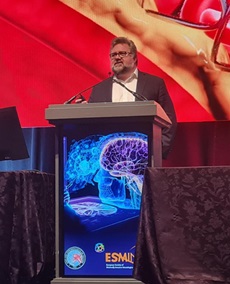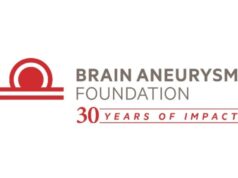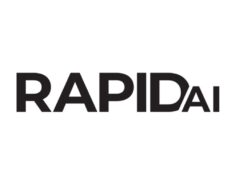
Coil embolisation of smaller intracranial aneurysms—those less than 5mm in size—has been found to be a safe approach, as per data presented for the first time at the 2024 Society of NeuroInterventional Surgery (SNIS) annual meeting (22–26 July, Colorado Springs, USA). Delivering late-breaking results from the COAST study, J Mocco (Mount Sinai Health System, New York, USA) detailed that coiling was associated with low rates of clinically significant stroke or haemorrhage alongside “impressive” adequate occlusion outcomes.
“Is it safe to coil small aneurysms?” Mocco initially queried. “When I was training, I had a senior neurointerventionist tell me that it is not safe and aneurysms smaller than 5mm are too dangerous because there’s not enough room to fully deploy a coil. But, last year, when we did our polling surveys at SNIS, we asked if it is reasonable to treat small aneurysms [3–6mm], and 95%-plus said that it was generally reasonable to do […] while only 4% or so said we really shouldn’t do this.”
Mocco went on to note that a similar polling question—this time homing in on aneurysms 4–5mm in size—was put to attendees of the 2024 SNIS meeting, revealing an even greater landslide of votes indicating that interventional treatment in these cases is “safe”.
COAST, which was a prospective, single-arm, multicentre study, sought to provide a more scientific and therefore definitive answer to these questions.
The COAST study
Across 15 centres in the USA and Canada, and over the course of 5.3 years, the study enrolled a total of 300 adult patients (mean age, 56 years; 76% female) with small aneurysms (≤4.9mm) deemed appropriate for endovascular treatment. Mocco noted that 109 patients (36.3%) had ruptured aneurysms. Enrolled patients were treated using the US Food and Drug Administration (FDA)-cleared Hypersoft family of embolisation coils (Microvention/Terumo), and followed up immediately after occlusion of their aneurysm as well as at six and/or 12 months post-occlusion.
COAST’s primary safety endpoint was patients’ freedom from new, imaging-confirmed, postprocedural ischaemic stroke and intracranial haemorrhage associated with a four-point worsening on the National Institutes of Health stroke scale (NIHSS) within 48 hours of treatment, or any new aneurysmal subarachnoid haemorrhage secondary to the treated aneurysm. Its primary efficacy endpoint was occlusion with a Raymond-Roy grading scale (RRGS) score of 2 or better on follow-up angiography performed more than 150 days post-embolisation that did not require retreatment, while key secondary endpoints included neurological morbidity/mortality evaluated at >150-day angiographic follow-up, and one-year retreatment rates.
Turning to the study’s results, Mocco reported that 99.3% of patients achieved the primary safety endpoint, with a “very low” rate of periprocedural stroke or haemorrhage that affected the patients’ outcomes being observed. In addition, regarding the primary efficacy endpoint in COAST, Mocco relayed a “quite impressive” 84% rate of adequate occlusion not requiring retreatment—also noting that the “actual” RRGS ≤2 rate, when including patients who did undergo retreatment, was even higher.
Core lab-adjudicated imaging outcomes in the study revealed a 69% rate of initial adequate occlusion, with RRGS ≤2 being observed in 76.1% of ruptured and 64.4% of unruptured aneurysms. And, at six- and/or 12-month follow-up, these rates rose to 89.8% (ruptured, 81%; unruptured, 94.4%). Mocco commented that these rates are higher than those typically seen across published aneurysm coiling data, perhaps owing to the fact that these were small aneurysms. Lastly, touching on secondary endpoints, the presenter reported that rates of mortality and modified Rankin scale (mRS) scores of 3–5 among unruptured aneurysm patients were both 1.2%, leading to a combined long-term disability-mortality rate of just 2.4%, while 6% of patients in COAST underwent retreatment, with 5.3% being retreated within one year and only two patients (0.7%) requiring a second retreatment.
“It does appear that the coiling of aneurysms that are less than or equal to 4.9mm [in size] carries a very low rate of periprocedural stroke or haemorrhage causing neurological deficit—and I think this is important, because it gets to the heart of that question of if it’s safe to do this,” Mocco concluded, also reemphasising the “excellent” delayed occlusion rates observed in COAST that “stand out” when compared against the existing coiling literature.
Take-home messages
Speaking to NeuroNews after his talk, Mocco posited that these data provide evidence that—in those cases where treatment is warranted—coil embolisation remains an “excellent option” for aneurysms that are smaller than 5mm.
“The age-old adage that small aneurysms are too high-risk to embolise with coils appears to be proven untrue, at least when using modern coil technology,” he added. “Moving forward, patients with small aneurysms, with risk profiles that indicate treatment, can avoid more invasive craniotomies.”
Subsequent to Mocco’s presentation, NeuroNews also caught up with the SNIS’ outgoing and incoming presidents to discuss the significance of COAST and its findings.

“The results of the COAST study are indeed quite impactful for a variety of reasons,” said Mahesh Jayaraman (Brown University, Providence, USA), whose yearlong stint as SNIS president came to an end at the society’s 2024 meeting. “First and foremost, we see that the coiling of aneurysms is indeed safe and effective—even in small aneurysms. As Dr Mocco indicated in his presentation, it was sometimes thought that treating these small aneurysms with coiling may be dangerous, but COAST demonstrated remarkable safety and efficacy.
“Secondly, it is reassuring to know that, while we have made great strides with newer treatment options including flow-diverting devices and intrasaccular flow disruption, our tried and true method of coiling was very effective in these small aneurysms. Ultimately, it is our patients who benefit from knowing that coiling is a very safe and effective treatment option for small aneurysms. There are certainly many aspects to making a treatment decision in patients with aneurysms and we encourage patients to consult with a neurointerventionist to discuss these options.”
Similar points were conveyed by new SNIS president Johanna Fifi (Mount Sinai Hospital, New York, USA), to whom Jayaraman handed over the baton in July.
“COAST shows that coiling of these aneurysms is safe and should be a primary treatment tool when feasible,” Fifi commented. “However, the decision to treat or not to treat in small, unruptured aneurysms is more nuanced, and conservative management should be carefully weighed and discussed with the patient prior to decision making.

“In respect to this study’s applicability to general practice, I think we should think along the lines of the relative risk of treatment versus morbidity and mortality from the natural history [of the disease]. COAST has shown that the treatment of small aneurysms can be accomplished by coiling with these coils at a very low complication rate. We know that the biggest divider or risk of the natural history of aneurysms is the rupture status. So, in ruptured aneurysms—which were about a third of the patients in the study—where the risk of rebleeding is quite high, this study demonstrates that treatment by coiling is safe and should, in my opinion, be preferred when feasible to more invasive treatment. For unruptured aneurysms, there is more nuance. We have to carefully weigh the small risk of the patient’s aneurysm causing issues with the comparable small risk of coiling. This should be a tailored approach, best determined after careful discussion of the options and risks with the patient.”
As alluded to by Fifi, some physicians may maintain reservations regarding the coiling of small aneurysms and continue to favour imaging-based follow-up, even in light of COAST’s positive findings, with these low procedural complication rates potentially still outweighing those carried by the condition’s natural history alone.












